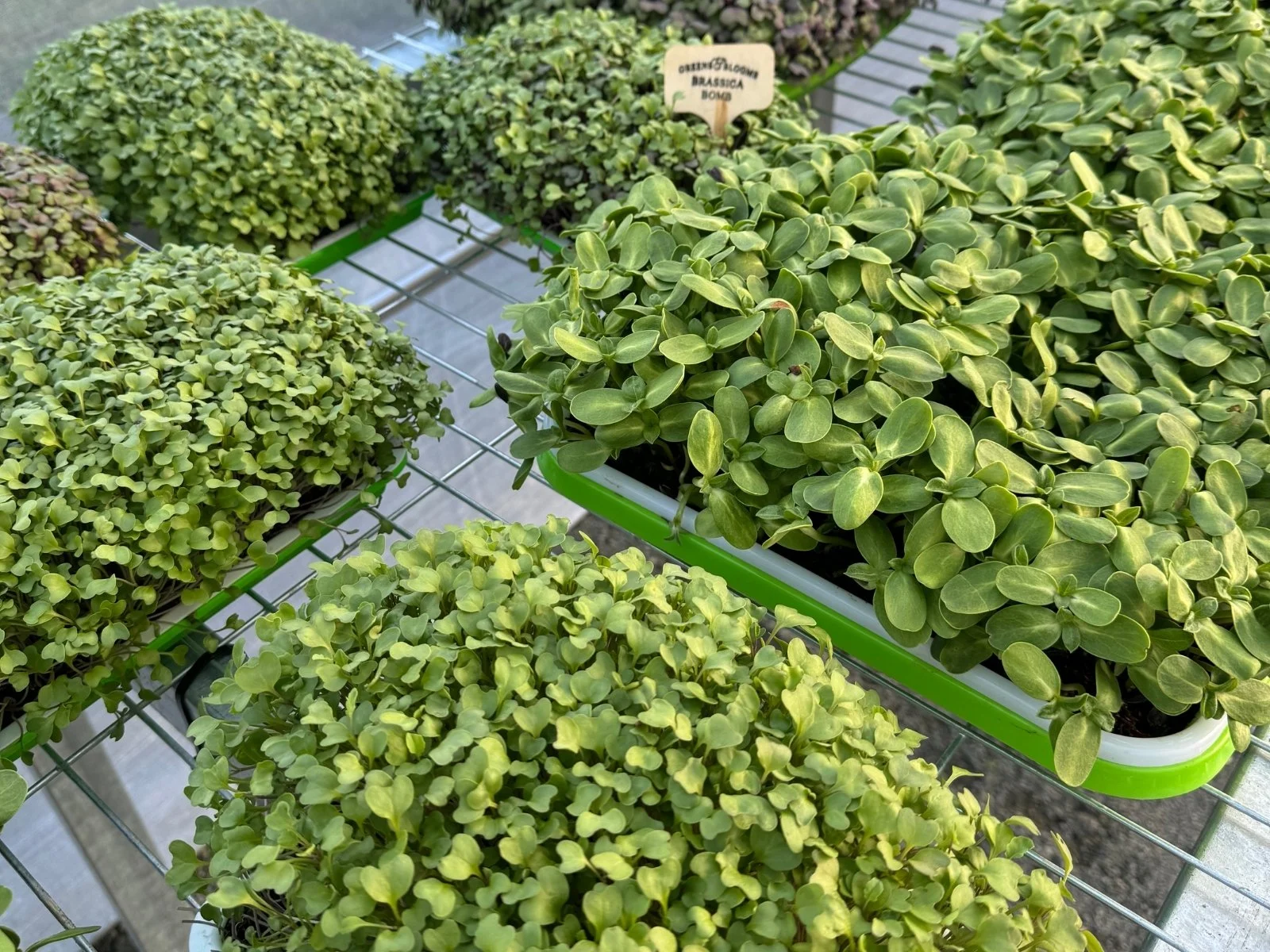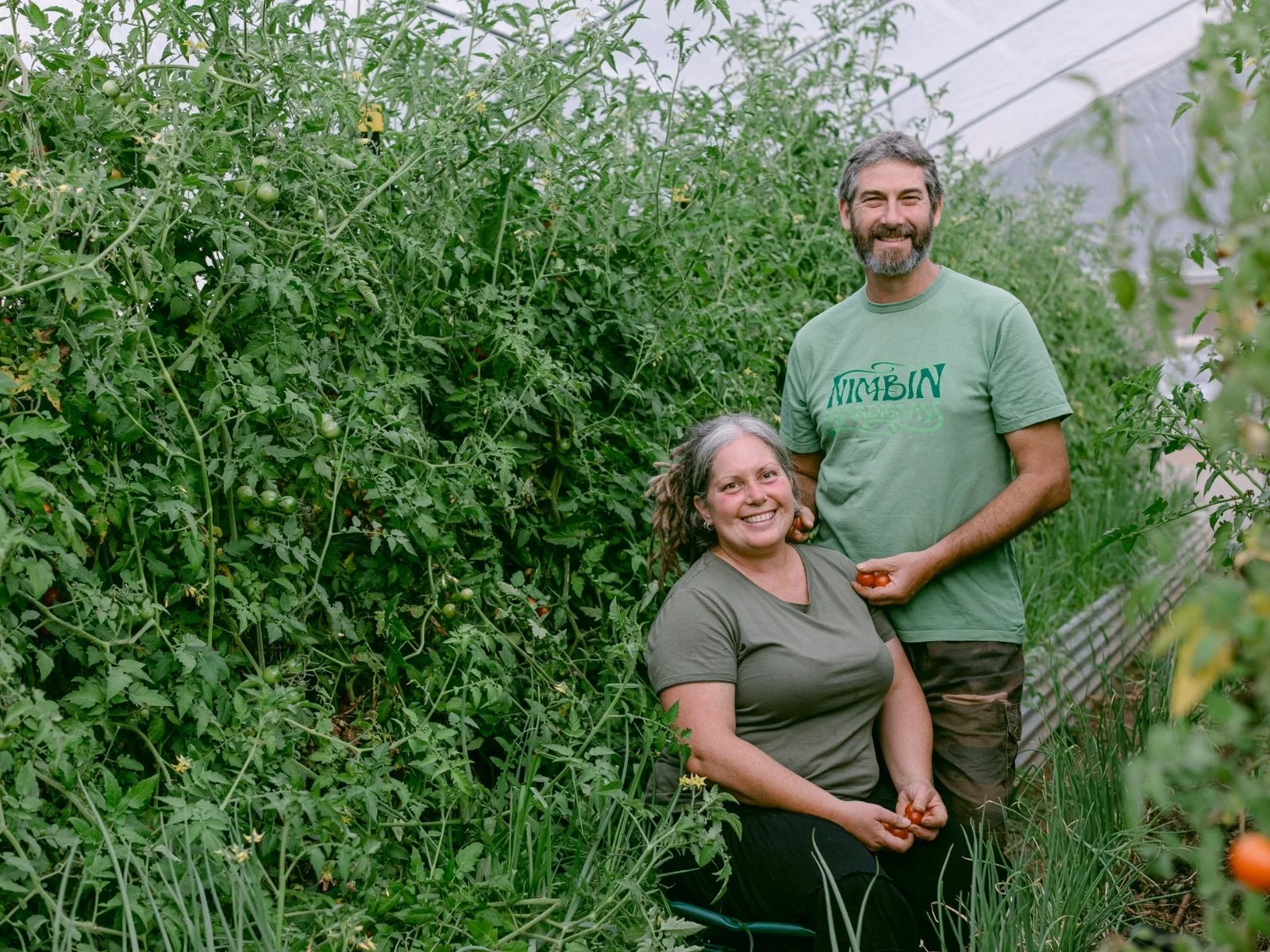Growing vegetables in polytunnels: Your guide to profitability
What’s the most profitable crop to grow in a polytunnel? It’s one of the most common questions we get asked. And while it would be easy to point to a high-value crop like tomatoes or microgreens, the real answer is: it depends. What you choose to grow inside your polytunnel should be guided by your goals—whether that’s replacing your grocery bill, earning a profit at market, or supplying produce to local retailers or restaurants. In this blog, we’ll help you unpack what “profitable” really means for different types of growers and how to make the most out of your tunnel vegetable farming setup.
Define Your Goals: Food Security or Income Stream?
For Backyard Growers: Replace Your Grocery Bill
If your main goal is to grow food for your household, profitability comes in the form of savings. What do you and your family eat most? Are there high-cost items you buy regularly at the supermarket? A good strategy is to identify the fruits, vegetables, and herbs you consume frequently, and work toward replacing those purchases with fresh, home-grown alternatives.
We suggest starting with some of the following, as easy-to-grow options that can produce a large amount of produce in your GROW Tunnel:
Salad greens: with a quick growing time, and if you succession plant, you could have a continuous harvest almost year-round.
Tomatoes & Cucumbers: a small number of plants can produce a high yield, maximising the space you have to grow other crops.
Strawberries: expensive to buy, but relatively easy to grow under cover as long as you keep them well-watered.
Herbs: fresh basil, coriander, parsley, and chives are high-value, low-space crops. No more fresh herbs rotting away in the bottom of your refrigerator after that one meal you needed to buy an entire bunch for. Plus, you can harvest any extra and utilise for dried herbs.
This approach not only gives you fresher produce, but puts money back in your pocket.
For Commercial/Market Gardeners: Grow What Sells
If you're farming for income, profitability is driven by what you can sell — and at what price. Start by doing some local research:
Talk to cafes, restaurants, and grocers in your area: they’ll be the main ones purchasing, so ask them what they struggle to source, or what they’d prefer to source locally.
Identify seasonal supply gaps in your region: when you grow in a polytunnel, you have the ability to extend your growing season which means you can supply when other growers can’t.
Choose crops that have a short shelf life: these crops will be best grown and sold locally.
Look for niche products: as long as there’s a market for them, crops such as edible flowers, microgreens and hard-to-find herbs can be a great source of income for growers.
Profitable produce options often include:
Tomatoes: especially heirloom or truss varieties
Strawberries: early or late-season supply fetches premium prices
Salad mixes and microgreens: high turnover, steady demand
Growing vegetables in high tunnels gives you the opportunity to extend your season and supply niche markets outside of peak windows. Check out our blog post ‘What can you grow in a polytunnel?’ for even more ideas.
High-Performing Crops for Polytunnel Profitability
Fast-Growing, High-Yield Crops
These crops offer short timeframes from planting to harvest and can be succession planted:
Lettuce and salad greens (rocket, mizuna, spinach)
Spring onions, radishes, baby carrots
Asian greens like bok choy and tatsoi
Long-Season, High-Demand Crops
These take more time and space, but return value through volume and consistent demand:
Tomatoes: a staple in tunnel vegetable farming
Capsicum and chillies: love the heat, high value
Cucumbers and zucchini: prolific croppers in protected environments
Niche or Premium Crops
For market gardeners supplying chefs or specialty grocers:
Edible flowers (nasturtiums, viola, calendula, marigolds, pansies)
Baby herbs or microgreens (pea shoots, amaranth, radish microgreens, broccoli greens, sunflower sprouts)
Unusual heirloom vegetables
Maximise Yield and Profit: Smart Growing in Your Tunnel
The key to maximising your profitability comes down to the right planning; of your space, of your crops and of your seasons. Here are our tips to planning for profitability:
Use Every Inch: Vertical and Stacked Growing
Don’t just think floor space—think cubic metres. Using vertical GROW Towers or trellises for climbing crops like beans, tomatoes, and cucumbers allows you to dramatically increase yield per square metre.
Succession Planting for Continuous Harvest
Stagger your plantings every 2–3 weeks so you have crops at different stages of growth. This keeps your harvest going year-round and reduces the risk of glut or scarcity.
Extend Your Season
Polytunnels help you get a head start in early spring and keep growing well into autumn (or even winter in mild climates). With the right crop selection and seasonal planning, you can:
Start seedlings earlier, saving money on buying seedlings in at peak times.
Grow summer crops longer, and bridge the “spring hunger gap”.
Protect crops from seasonal extremes such as intense rain, wind, frost and sun.
You can learn more about extending your growing season with out ‘Season extension with a polytunnel’ blog post here.
Consider the Costs: What Goes Into Polytunnel Profitability
To ensure your polytunnel is profitable, you must consider the costs that go into setting it up, seasonal inputs and ongoing maintenance.
How much does a polytunnel cost? It depends on the size, materials, and any additional components like ventilation, guttering, or shade cloth. Compared to glasshouses, polytunnels offer a more cost-effective way to create a controlled growing environment.
Below are some of the key costs to consider in the budgeting process, their relevance will depend on your chosen tunnel size, and growing methods:
Your GROW Tunnel
With sizes from 4m x 5m to 40m x 40m, there’s a tunnel size that’s sure to meet your growing goals, space and budget. You can get an instant quote on our polytunnels here.
Site Preparation
It’s important your tunnel is constructed on flat land, therefore you may require earthworks to prepare the site, subbase or pad for underfoot within the tunnel to keep weeds down, and any irrigation work.
Construction
Our GROW Tunnels come with full instructions supplied, however you may wish to hire a local handyman, builder or our Northern Rivers installation team to help you construct the tunnel. Depending on the size you choose, and your local council regulations, you might also need to apply and pay for a DA prior to constructing your GROW Tunnel. Consult your local council for more details.
Electrical requirements
Whilst the tunnel itself doesn’t require power, if you intend on installing extraction fans, motorised roll-up sides or vents, utilising GROW Towers, or powered irrigation systems, you may need to consider having a small solar power setup installed where your tunnel will be located.
Irrigation
Your requirements for internal irrigation systems, including drip systems, overhead systems, timers and any relevant plumbing also needs to be considered. Additionally, the purchase of a water tank, if utilising the GROW Tunnel guttering system, to harvest rainwater from the roof of your polytunnel (gutters are included in Rural & Commercial models as a standard inclusion, and available as an add-on option in our Mini tunnel range).
Internal Growing Infrastructure
Whether you will grow in pots, raised garden beds, in vertical or NFT hydroponic systems, ebb-and-flow tables, needs to be considered in your polytunnel budget. This internal infrastructure is crucial to getting your tunnel setup right from the get-go if you don’t plan on growing directly in the soil.
Inputs
Compost, your initial seeds or seedlings, fertilisers and pest/disease control are must-haves to set up your growing systems for the best outcomes, beginning with your first crop. If you’re utilising raised gardens, you can reduce the soil required, by utilising the organic matter, such as sugar cane bales, sticks, leaves and twigs to build up the majority of the beds, filling with top soil and compost in the top third or depth required for growing.
Once you’ve considered the costs for each of the above, you can calculate your break-even point. For backyard growers, this would mean the equivalent cost of the food you’re producing covers the start-up costs of your tunnel, inputs and any ongoing costs.
For commercial growers, your break-even point will be important to know, so you can be prepared. Calculate how many harvest (at what yield and price-point) would you need to cover the cost of your investment.
Choosing the Right Tunnel for Your Needs
Of course, nothing in gardening and farming can be guaranteed, but determining your break-even point, can help you determine the best tunnel size, crops to grow, planting schedule and growing methods you’ll use, in order to maximise your profitability.
Whether you’re growing for home or market, the right polytunnel makes all the difference. Here are some considerations to think about:
Size: match your ambitions, budget, space and the amount of time you have to dedicate to your tunnel.
Ventilation: look for tunnels with roll-up sides, dual doors for airflow, and the ability to add extraction fans if required for your climate.
Irrigation & water catchment: our tunnels come with the option to harvest rainwater from the roof, which not only protects the perimeter of your tunnel from erosion but also enables you to catch water for irrigating your crops.
Climate resilience: choose a tunnel suited to your local conditions (wind, UV, rainfall). Our tunnels are engineered to withstand up to 130km/h winds, with hot-dipped galvanized steel built to withstand the Australian climate.
Our GROW Tunnels are purpose-built for Australian conditions, with options for commercial polytunnels Australia-wide. Not sure what polytunnel to buy? Our team can help match you with the right model for your space and goals.
The most profitable crop in your polytunnel isn’t the same for everyone. For home growers, it might be a full salad bowl you no longer have to buy. For commercial growers, it might be the cherry tomato variety your local café can’t get enough of. The key is to plan around your goals, use your space efficiently, and think beyond just one growing season.
With the right setup and a bit of planning, your polytunnel can become your most productive growing space — whether you’re feeding your family or fuelling a local food movement.
Ready to grow smarter? Get a free instant quote, or explore which GROW Tunnel is right for you here.








